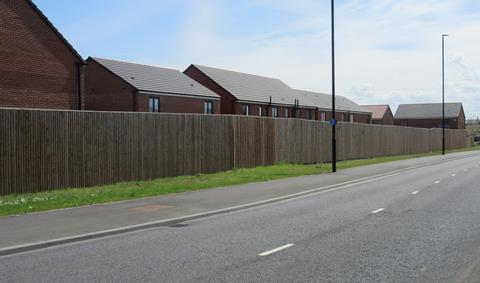National housing audit finds “unethical” housebuilders are designing just 26% of homes well
“Greedy” housebuilders are constructing homes that are overwhelmingly of poor or mediocre design quality according to a national housing audit conducted by University College London.
The report, co-funded by the Place-Alliance and the Campaign to Protect Rural England (CPRE), found that three-quarters of new homes constructed by large builders are of “mediocre” or “poor” design quality, with one in five so bad they should never have been given planning permission.
Principle report author Matthew Carmona, professor of planning and urban design at the Bartlett School of Planning at UCL, told Housing Today that the research showed major housebuilders were failing to act ethically, and were putting profit before all other considerations.

The report is the first since Cabe, the government’s former architecture quango, conducted national audits in 2004 and 2007. It suggests the quality of design has improved somewhat, with the number of schemes being classed as poor or very poor since 2007 falling from 29% to 20%.
Similarly, the proportion of schemes being classed as “good” or “very good” increased from 18% to 26%. However, the report concludes that the picture overall is not greatly changed, with 74% of schemes either mediocre or poor, compared with 82% previously.
Carmona said the research, which assessed 142 schemes against a range of criteria including street design, environmental performance, character, accessibility and local amenity, showed that the industry was still “failing” with regards to quality.
The research found that individual housebuilders were often able to produce both high-quality and low-quality schemes in different places, with the affluence of the area being the major determinant of whether or not a scheme was well designed. Poorer areas were found to be 10 times more likely to get bad design, while low-density suburban schemes were also disproportionately likely to be poor.
The publication of the research comes after embarrassing design and build-quality failures at several major housebuilders including Persimmon and Bovis. It also comes in advance of the publication of the final report of the government’s Building Better Building Beautiful Commission, set to be published this month.
Carmona said he was “disappointed” the audit had found the situation so little improved in the past decade. Cash-strapped local authorities, highways engineers and the government – which he said had “taken its eye off the ball” with the abolition of Cabe – all had some responsibility for the failure to improve.
However, he added: “Clearly housebuilders have a big responsibility for this. They need to show an ethical responsibility to do things which will make better places, but they aren’t doing it, by and large. Where they can get away with doing less, they are.
“Some are putting profit before anything else,” he said.

Carmona added that site-specific design interventions were the surest way to improve the quality of schemes, with those produced to meet site-specific codes five times more likely to be well designed, and those taken through a design review process four times more likely.
He called on the government to promote higher density development, instruct the planning inspectorate to recommended refusing poorly designed schemes on appeal, and require the highways authorities to take a broader view of their role in creating places.
However the Home Builders Federation, which was part of an advisory group set up to oversee the research, rejected its findings, saying that the overwhelming majority of homebuyers were happy with their purchases.
A spokesperson for the HBF said: “The conclusions reached are based on assessors’ judgments of the wider development, not the house, and are not reflective of residents’ opinions about their new home, or environment.
“The inspectors marked schemes on over 20 building for life elements including road design and access to public transport. As recognised in the audit, many of these issues are not within the control of the builder but others, such as local highway authorities and local planning authorities themselves.”
Design for Homes chief executive David Birkbeck questioned whether the budget for the research was enough to allow a rigorous and representative audit.
Carmona rejected any notion that the findings had been influenced by the sponsorship of the research by the CPRE, which is widely seen as anti-housebuilder. He said: “This is absolutely as rigorous or more rigorous than the work Cabe did. We used local researchers on the ground who knew their areas, so if anything it’s fairer.”










2 Readers' comments